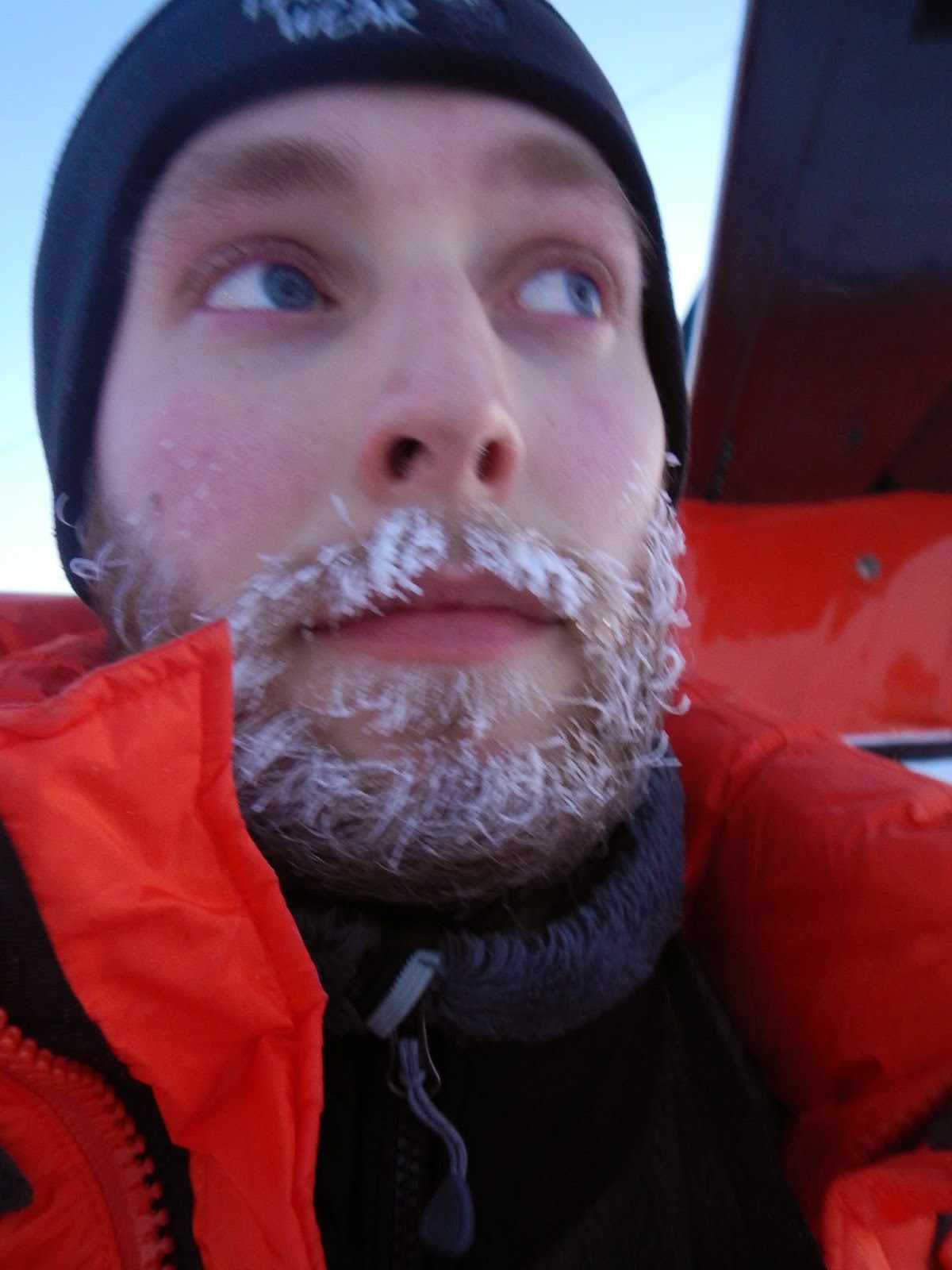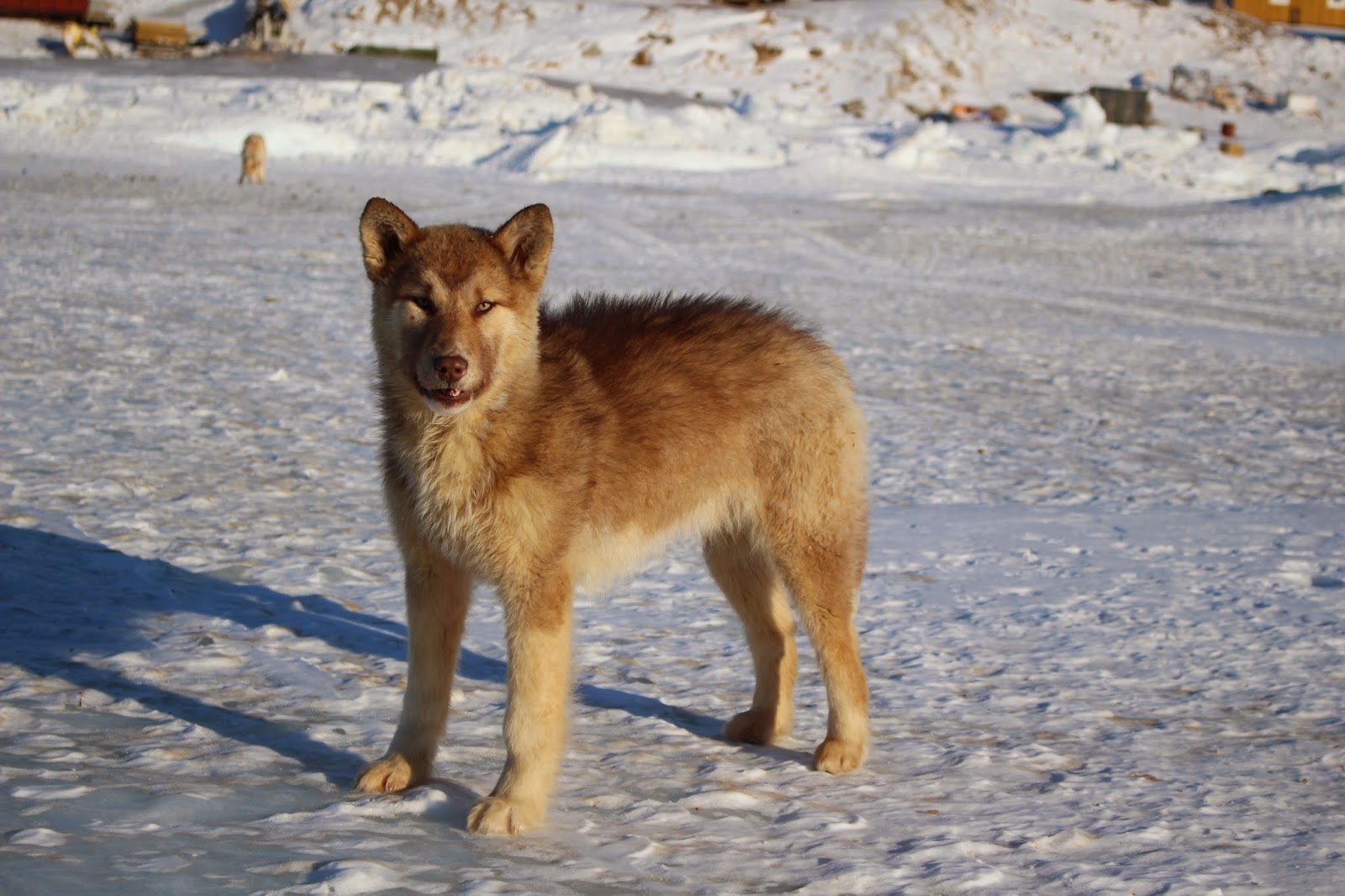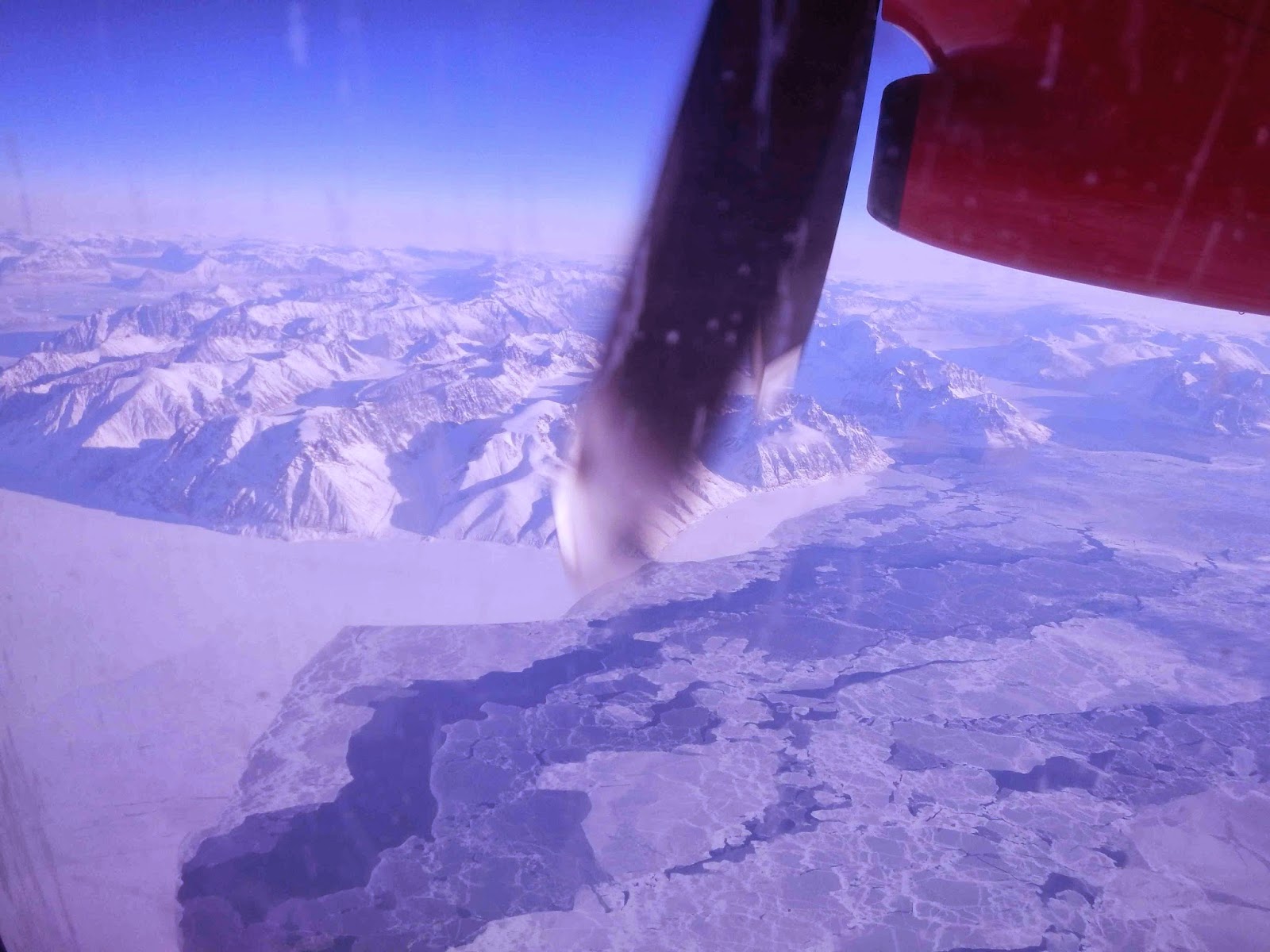Whilst we were out on the camp we had flyovers from three
different aircraft carrying various geophysical instruments to measure the sea
ice. Everyone got very excited by the DC3 (the same one that took us
from Qaanaaq to Station Nord) towing the EM bird underneath. The EM bird is a
torpedo shaped device that measures the sea ice thickness through
electromagnetic sounding. The DC3 tows it on a cable 50m or so beneath the
aircraft, only 15m above the ice surface. The cable makes a whistling sound as
it cuts through the air and makes for a very dramatic sight.
At the same time as the DC3 we also had the TF-POF Twin
Otter carrying a laser scanner and ASIRAS. ASIRAS mimics the operation of the
instrument onboard CryoSat-2 and is very useful for linking what we see on the
ground with what is seen on the aircraft, and what is seen by the satellite
itself.
Then a couple of days later, on 1st April we were
treated to multiple fly overs from the NASA Operation IceBridge P3. This is the
biggest of the three aircraft and carries a comprehensive set of instruments
for assessing the state of the sea ice.
Combined with the measurements that the ground teams made –
thousands of snow depth measurements, ice thickness measurements, our radar
penetration measurements – we have collected an incredible wealth of data on
this sea ice floe. There will be a lot of analysis to do but it should shed
some real light on how we measure sea ice using CryoSat-2 and hopefully even
improve our methods.














































